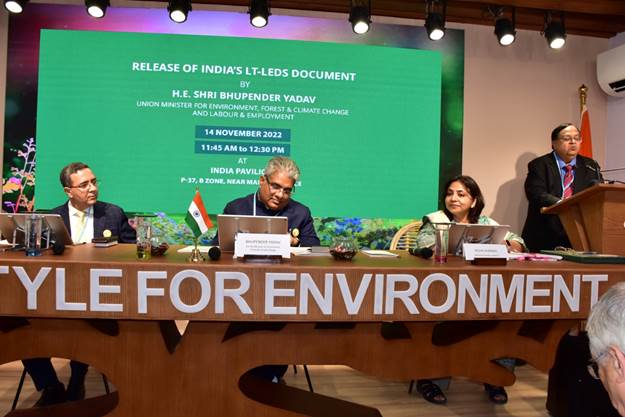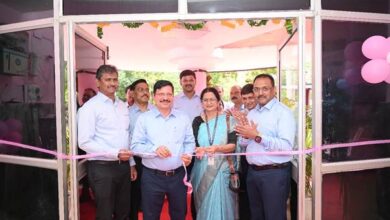India Launches Long Term Low Carbon Development Strategy (LT-LEDS) At COP 27
It's a follow-up of PM Modi’s speech in Glasgow where he committed to India meeting net zero goal by 2070

India launched its Long Term Low Carbon Development Strategy (LT-LEDS) at the on-going UN climate summit, COP27 in Sharm-el-Sheikh, placing itself along with the 57 other nations which have submitted their long term strategies. This was done by India’s Environment Minister, Bhupendra Yadav at the India@75 pavilion at the COP27 venue.
India’s LT-LEDS is an important statement of intent to pursue low-carbon strategies for development, and asound beginning toward doing so. It’s a follow-up of Prime Minister Narendra Modi’s speech in Glasgow where he committed to India meeting net zero goal by 2070. India’s approach is based on four pillars that inform its climate policy landscape, namely its low historic contribution toward global warming, significant future energy needs of the country, national circumstances as it pertains to committing to low-emission growth strategies, and the need to build climate resilience.
The more than 100 page document specifies that it will focus on the following seven sectoral priorities to meet India’s decarbonisation goals. The strategy is firmly, and appropriately, anchored in considerations of climate equity. It calls for developed countries to undertake early net-zero and to provide adequate finance and technology in support of India’s plans for low-carbon development.
Goals for India –
- Low carbon development in electricity systems consistent with development:
The Indian government will prioritise demand side management for future planning of power systems. The LT-LEDS also mentions the rationalisation of fossil fuels, “with due regard to energy security”. A further priority area will also be the development of green taxonomy for the power sector.
*Develop an integrated, efficient, inclusive, low carbon transport system:
The LT-LEDS section on transport includes priority planned actions around a phased transition to cleaner fuels. Demand side management measures have also been mentioned, along with measures on traffic management and intelligent transport systems
- Promote adaptation in urban design, energy and material efficiency in buildings, and sustainable urbanisation:
Adaptation measures have been prioritised in the urban development section of the LT-LEDS along with low-carbon modes of municipal service delivery and waste management - Promote economy-wide decoupling of emissions from growth, and development of an efficient, innovative, low-emission industrial system:
India’s LT-LEDS for industrial decarbonisation depends heavily on measures to improve resource efficiency and exploration of fuel switching/electrification as and when viable. The strategy document also places special focus on the decarbonisation of MSMEs, which have been largely absent in India’s decarbonisation story, despite carrying a significant industrial base, energy demand and being a large source of employment. - CO2 removal and related engineering solutions
- Enhancing forest and vegetation cover, consistent with socio-economic and ecological considerations:
The LT-LEDS carries special focus on the Restoration, conservation, and management of genetic resources contained within India’s forests, including but not limited to plant and animal diversity - Economic and financial aspects of low carbon development:
The strategy document recognises the challenges climate change and decarbonisation hold for fiscal policy and financial systems. India’s long term strategy shall involve the mainstreaming of climate finance and the development of new New multilateral mechanisms for supporting innovation, and technology development
The document clearly emphasises that India faces significant energy needs for development. The important principle of climate equity can be operationalised by laying out its own vision and simultaneously identifying within it the needs for support from developed countries by India.
The writer of this article is Dr. Seema Javed, a known Environmentalist, Journalist and Communications Expert




